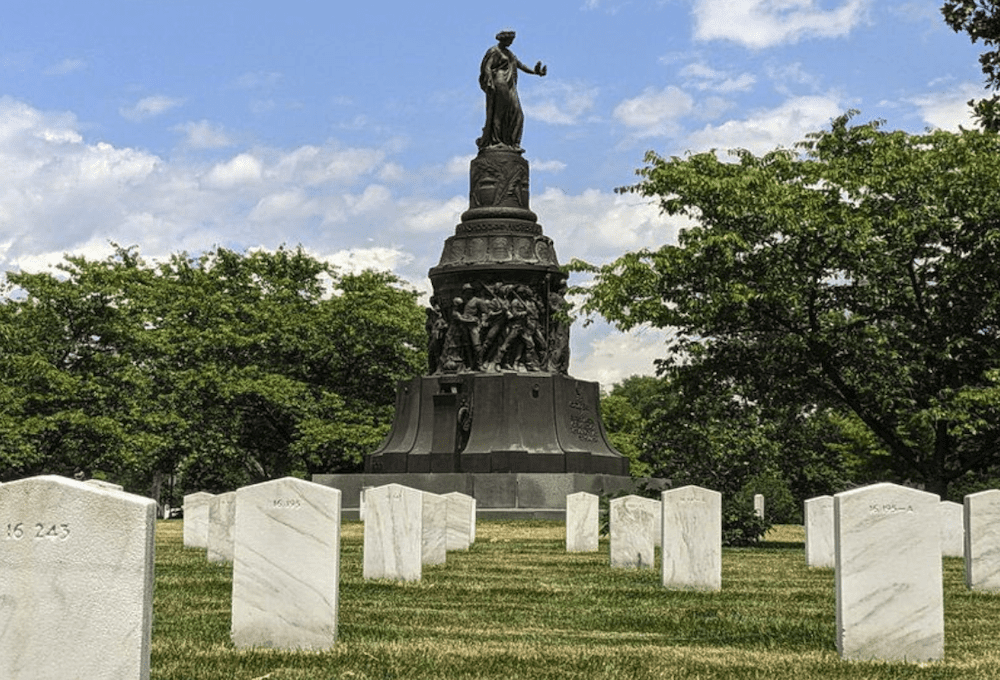In the thick of growing national controversy, a U.S. federal judge has thrown a curveball by issuing a temporary restraining order halting the removal of a Confederate monument at the Arlington National Cemetery. The order comes mid-way through the removal process of the monument, which pays tribute to Confederate soldiers – a move that has stirred the boiling pot of public opinions on the place of such memorials in modern society.
The Biden administration is removing the Reconciliation Monument in Arlington.
The monument was built 109 years ago to honor post-Civil War reconciliation and national unity.
History is being rewritten before our eyes. pic.twitter.com/GC7u7f8Ao4
— End Wokeness (@EndWokeness) December 17, 2023
The lawsuit that led to the restraining order came from the group Defend Arlington, affiliated with Save Southern Heritage Florida. They filed the case in federal court, claiming the removal of the monument, a recognized grave marker which has been standing in the Arlington National Cemetery (ANC) for more than a century, would “desecrate, damage, and likely destroy” it, thereby compromising its eligibility for listing on the National Register of Historic Places.
What lies at the center of this debate is not just a physical monument, but the very nature of historical memory. The Confederate Memorial in the Arlington Cemetery commemorates members of the Confederacy’s armed forces who fell during the Civil War. Many see it as a vital piece of American history. The memorial, sculpted by Confederate veteran Moses Ezekiel, stands in Section 16 of the cemetery. Ezekiel himself is interred near the monument’s base. This section, designated as the Confederate Section in 1900, is where Confederate casualties from various parts of the cemetery were gathered and reburied.
The removal of the memorial was part of a Congressional directive, to be executed following the National Environmental Policy Act (NEPA) guidelines. The 32-foot-tall bronze Confederate Memorial, erected in 1914, was due to be removed by January 1, 2024. However, the court order has temporarily halted this plan.
#ConfederateMemorial in Arlington Cemetery is being dismantled today.
I hate these people 😠 pic.twitter.com/D64LTcP7r7
— 🇺🇲Salty Texan (@texan_maga) December 18, 2023
Detractors of the removal argue that tearing down these monuments is tantamount to erasing history. According to them, it’s plausible to simultaneously acknowledge the darker aspects of America’s past and respect the historical importance of these symbols. On the other hand, supporters of the removal believe such monuments glorify a painful and divisive period of American history.
As the news broke about the temporary hold on the removal process, social media was abuzz with varied reactions, painting an eclectic picture of the nation’s sentiments on the issue. Salty Texan, presumably a pro-monument Twitter user, expressed ire, writing “#ConfederateMemorial in Arlington Cemetery is being dismantled today.” Another user, @EndWokeness, lamented that history was being rewritten with the removal of the monument, which was built over a century ago to symbolize post-Civil War reconciliation and unity. Matt Walsh noted the irony of the removal, stating that the erasure of the Reconciliation Monument indicated a refusal to move on from the Civil War contrary to what the monument symbolized.
Journalist Emerald Robinson suggested that the removal of historical monuments was indicative of a communist cultural revolution, while Rep. Andrew Clyde attributed the removal to a regime of division in the White House.
Ultimately, the future of the Confederate monument at the Arlington National Cemetery hangs in an uncertain balance, its fate to be determined by the U.S. federal courts. As America watches, the case underscores the deep-running polarities that exist in the country surrounding Confederacy-related monuments, challenging the contention that they are mere markers of history. Instead, they serve as flashpoints, starkly revealing the traction in public opinion concerning historical interpretation and the canonical narrative. Today, the monument stands both as a tribute to a bygone era and a modern symbol of a debate that proves to be far from settled. As the nation looks back on its history, it must also look within and decide how it will choose to remember its past and shape its future. The saga unfolding at Arlington National Cemetery is not merely about preserving or erasing history but about the complicated process of reckoning with it.



